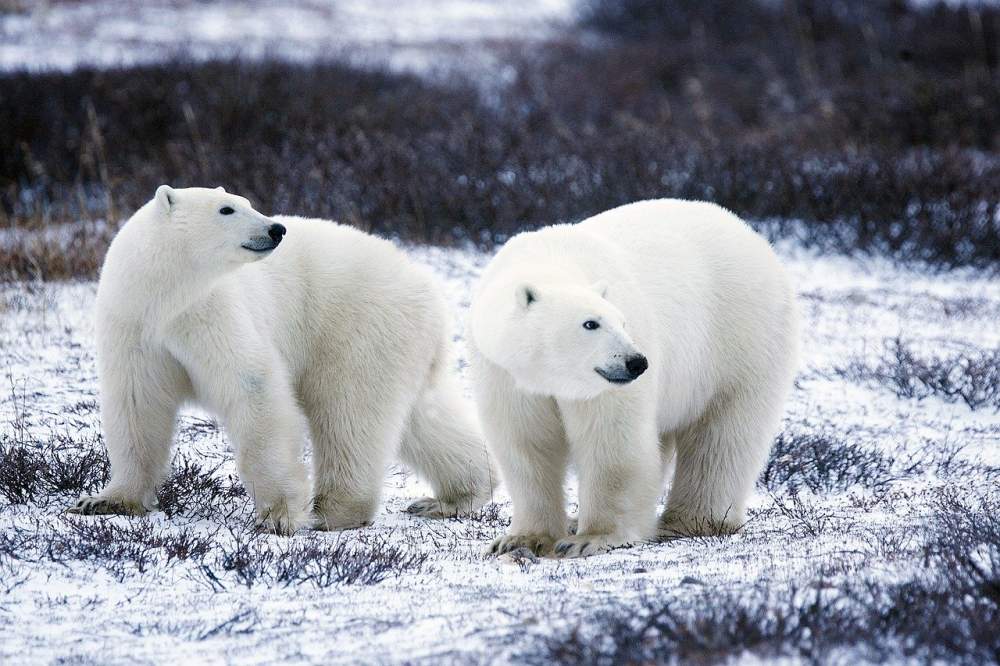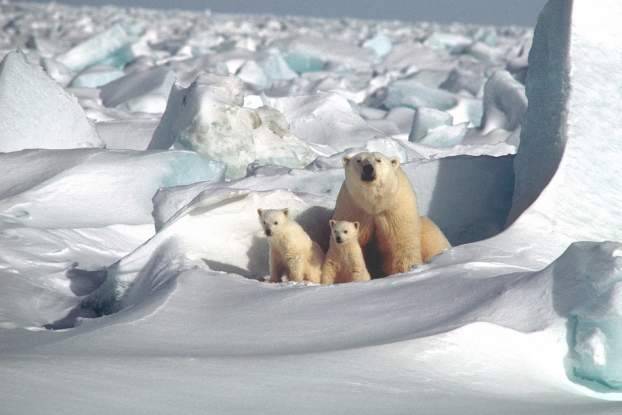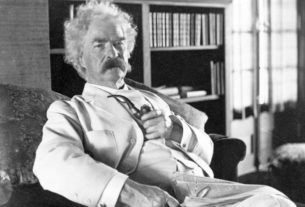Book Review of ‘Polar Dream: The Heroic Saga of the First Solo Journey by a Woman and Her Dog to the Pole‘ by Helen Thayer.
“About twenty feet in front of the iceberg, Charlie stopped, and began growling loudly, his back hair standing on end. I had no doubt that it was a bear. I tore my skis off, unclipped the sled ropes from my harness, grabbed the rifle and flare gun and stood waiting with Charlie at my side still clipped to my harness. He was at the end of his chain, snarling, staring straight at the wall of ice. Every nerve in my body was tense.”
When Helen Thayer, a New Zealand born adventurer and explorer, undertook an expedition in 1988 to the North Magnetic Pole, one of the most challenging terrains on our planet, it was an epic solo attempt – the first by a woman and one conducted without any re-supply schedules – conducted solely on foot, which required even the last iota of physical and mental endurance for her to successfully complete. ‘Polar Dream’ brings to the reader all the glory and grit from this heroic journey conducted by Helen and Charlie – a big, sturdy, black Canadian Eskimo dog – in fine detail.

The visuals of extreme harshness of the Artic weather conditions, its treacherous terrains, pangs of loneliness, examples of intense human stamina, dangerous encounters with polar bears, are all brought to the reader with a highly engaging textual rendering by Helen within this book. In the severe Polar conditions Helen often found herself getting maddeningly far away from the civilization and in such situations she found inspiration and love from Charlie, who through his acts of trust, care and bravery saves her life and sanity a multitude of times, and these descriptions of the warm bond between the explorer and her guide dog is one of the main highlight of ‘Polar Dream’.
The Idea of the Epic Expedition
Helen Thayer, born in New Zealand in 1937, was always an adventurer in her life and her exposure to outdoor adventure started at a very young age of nine, when her parent took her on a mountain climbing trip to Mount Taranaki. In the initial days of her career, she was very active in outdoor competitions and went on winning many National Championships, but her ‘true inner voice’ asked her to ‘compete against herself’ and she started concentrating more on expeditions and mountaineering. After a string of mountaineering projects across the globe, she decided to tackle the polar challenge and the support of her husband, Bill, added to the prospect of such a polar adventure.
To understand the North Magnetic Pole she consulted with a number of scientists who in turn gave her insights into the concept and general conditions of Earth’s Northern Hemisphere. North Magnetic Pole is not a precise location on the map or the earth’s surface, but an average position that is constantly in motion in a jagged elliptical path along a clockwise direction due to magnetic changes in Earth’s core.

From the early days, European navigators believed that compass needles were attracted to a ‘magnetic island‘ somewhere in the far north. It was the English natural philosopher William Gilbert, who proposed that the Earth itself acts as a giant magnet and the North Magnetic Pole is a point where the Earth’s magnetic field points vertically downwards. All over the world the compass is used for navigational purposes as it points the North Magnetic Pole, but in the Polar area, compass is totally unpredictable as the lack of horizontal magnetic pull makes the compass arrow behave erratically.
At the time of the intended expedition in 1988, Helen finds from scientists that the North Magnetic Pole was situated in the barren ice covered lands south of ‘King Christian Island’ in the Northwest Territories of Northern Canada, almost 800 miles north of the Arctic Circle. With this information Helen decides to start the expedition from Resolute Bay, an Inuit village on Cornwallis Island and from there to proceed to Little Cornwallis Island, which is an outpost with zinc mines and the last point of human inhabitation in the intended route of her journey.
From this outpost in Little Cornwallis, Helen had to traverse about 350 miles through extremely difficult terrain covered in a string of islands and sea ice and thriving with artic foxes, polar bears and seals, with the ever present prospect of meeting with extreme dangers in the form of ice cracks in the sea ice and hurricane force winds. She decides to conduct the whole expedition on foot and skis, without any snowmobiles or dog teams and carrying just enough supplies to last 40 days, with the supplies stored in a sled pulled by herself and without any in-between supply schedules. To meet the highly demanding physical and mental strength required for such a journey, she undergoes a regime of intense endurance training sessions.
The Journey begins
In March 1988, as planned she begins her expedition from Resolute Bay, with the ‘International Explorers Home’ there as her sole point of contact through radio during the entire length of the journey. She also receives some primer training in surviving artic conditions from an Inuit hunter, who gives her ‘Charlie’ the Eskimo husky as a protection against polar bears. After acquiring all the supplies for herself and Charlie, she heads on to the mining outpost at Little Cornwallis.
In the land of Nanuk
The Inuit call the Polar bear Nanuk and through out the journey from the mining outpost Helen and Charlie had to traverse through the domain of this mighty beautiful hunter and some of the encounters they have with the bears are really spine tingling to read. In the initial phases of the journey, we can see Helen going through emotional turmoil over the harsh surroundings and the prison like loneliness and she often questions her decision for taking up such a huge challenge. Charlie transforms the prospects for her, as he was the prime beacon of trust and care that led her way and through reasoning and presence of mind, she conquers her fear.

On the first day of the journey itself, Helen finds the true meaning of the harshness of the Polar conditions as 40kmph wind and –45 degree temperatures (further lowered by the windchill factor) gives her blistered hands with the prospect of frostbite. On the second day they have their first polar bear encounter and the high tension descriptions of Helen and Charlie trying to scare the bear away will make the reader experience the chillness of the arctic atmosphere. The ferociousness of Charlie and the valuable lessons that she learned on survival from the Inuit hunters comes to her rescue in numerous such encounters that they face further along the length of their journey.

Helen describes each moment from the journey with a clear focus and clarity and the taut style of the narrative always keeps the excitement factor up for the reader. Each of the breath taking incidents – like the blood curdling encounter they have with a full grown male bear at the ‘Polar Bear Pass’, in Bathurst Island; Helen and Charlie getting trapped in a howling snow storm for the entire length of two days; the team surviving nerve wrecking experience of finding themselves in terrain threatened to swallow them with the formation of ear-splitting ice fissures; resorting to a sun-shadowdial after the compass becoming non-dependable for navigating; Helen getting injured in the eye and they losing their provisions in a storm and braving against thirst and hunger through sheer perseverance at the final phase of the journey – strengthens the attachment between the dog and the explorer and the descriptions of the scenery and animals will immerse the reader in the adventures of Helen and Charlie.
The successful completion of this epic journey after 27 days and 360 odd miles earned Helen Thayer the name of “One of the Great Explorers of the 20th Century” along with a string of other accomplishments. And ‘Polar Dream’ which brings this travel/ adventure/ expedition through captivating narration is definitely one of those books, which can inspire the reader with crystal like reflections of extreme human endurance. Reading about the way in which Charlie, the tough Inuit dog, returns the affection and warmth shown by Helen through his love and trust is most heartwarming. The narrative is further enriched with some quality photographs taken by Helen. Recommended for lovers of real-life adventures and nature/ travel narratives.






